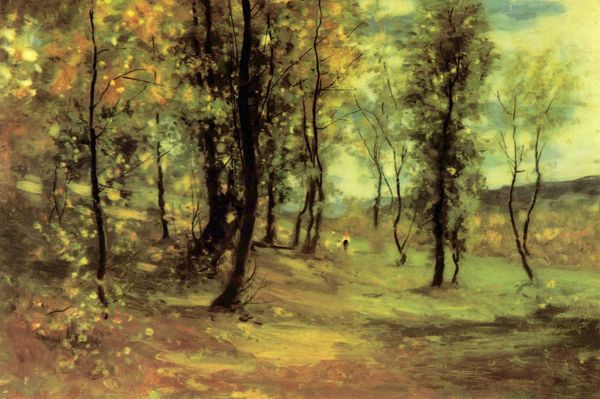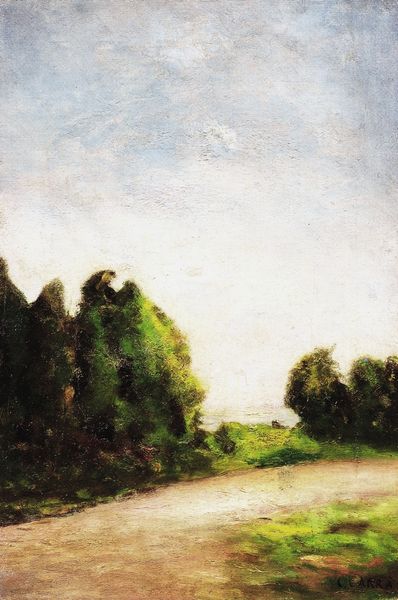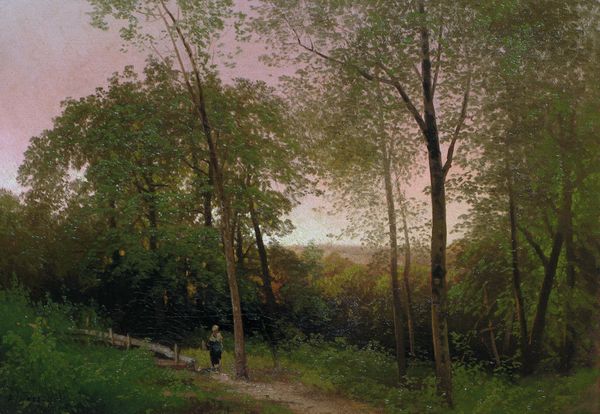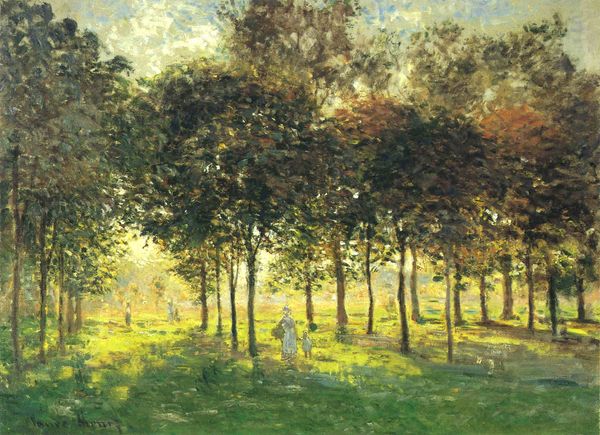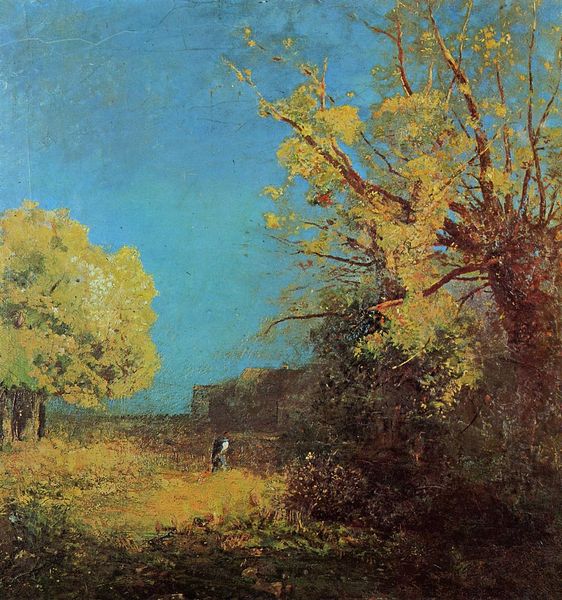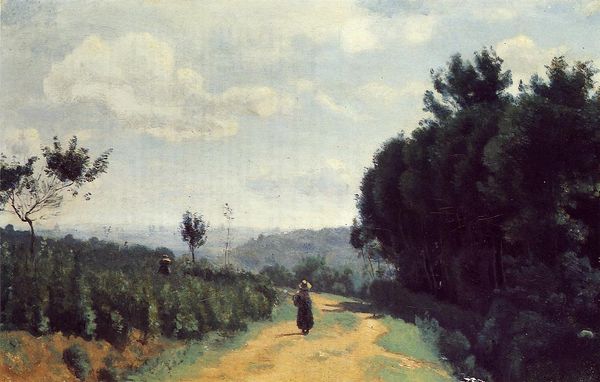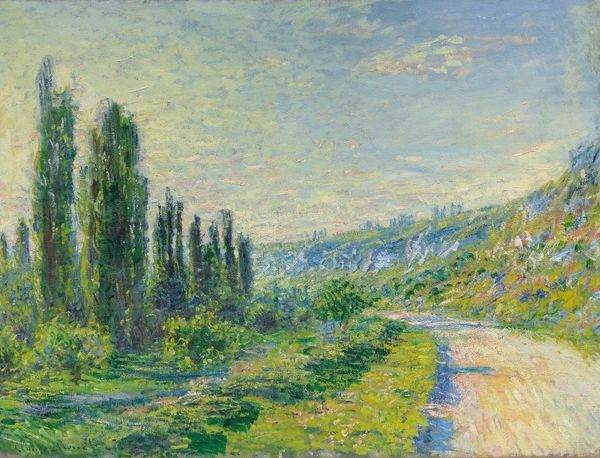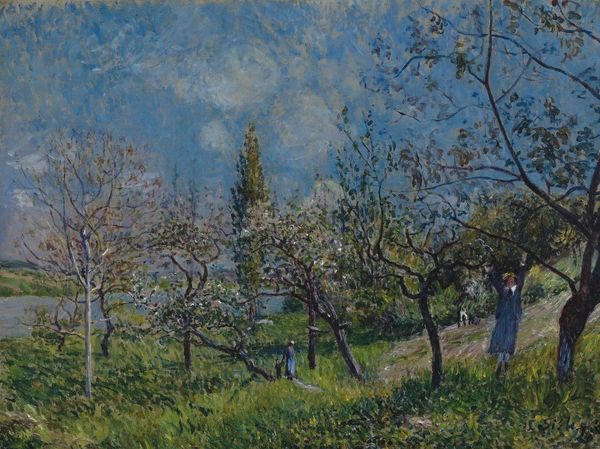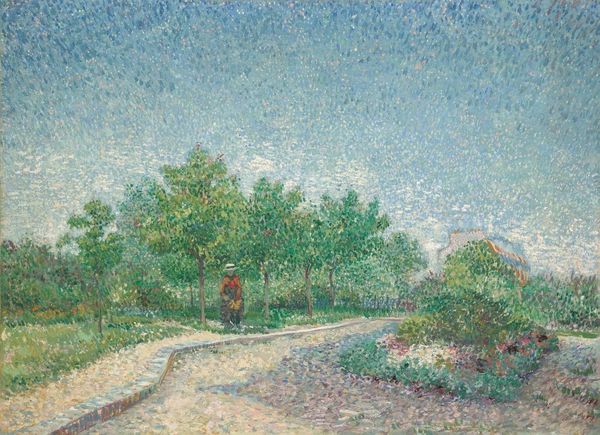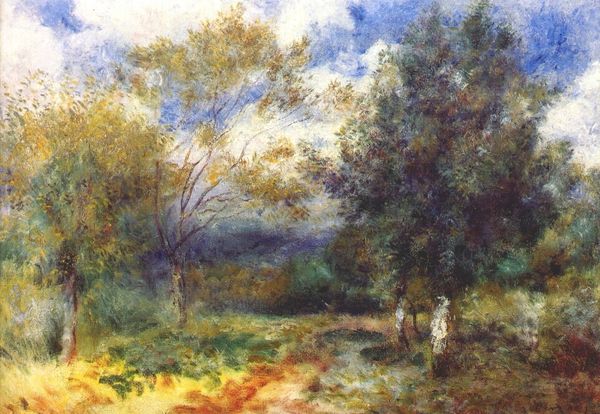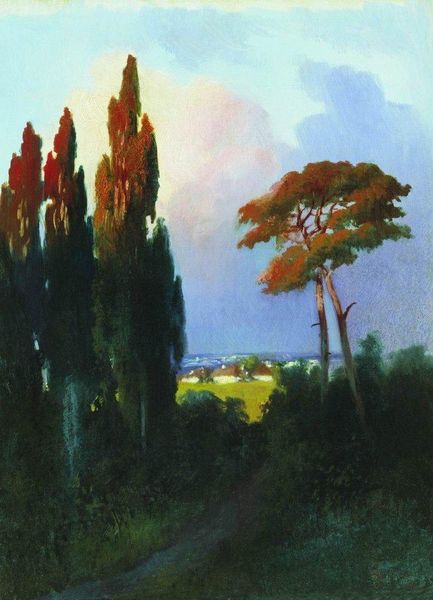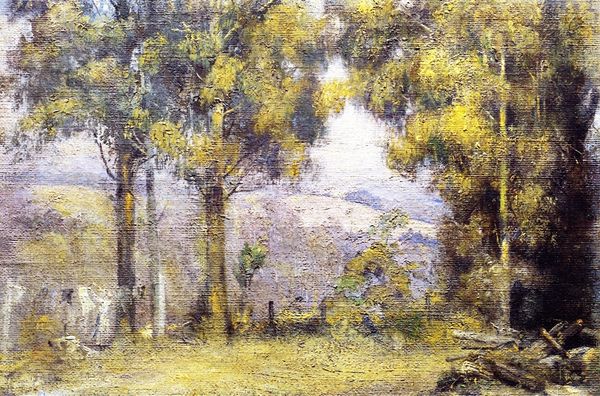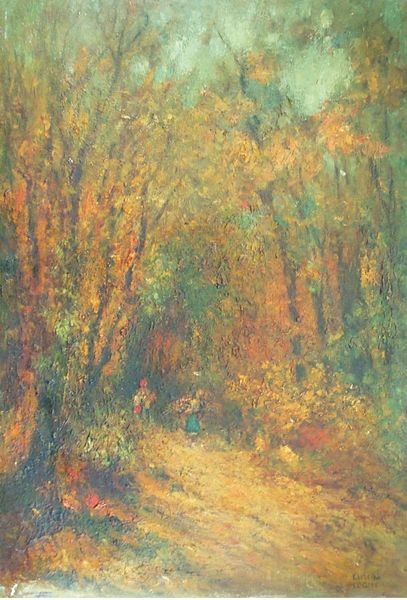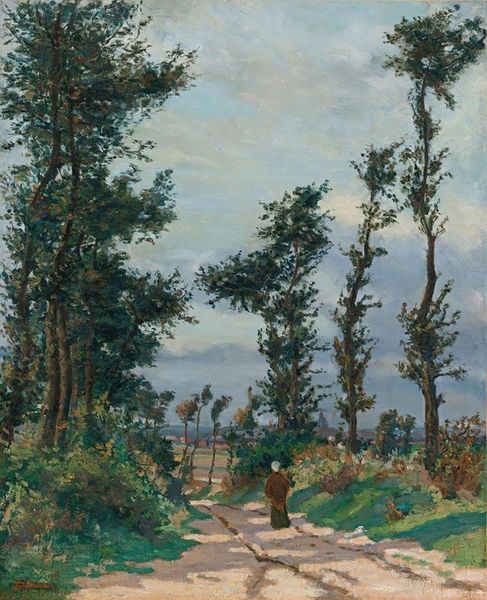
painting, oil-paint
tree
garden
sky
painting
grass
oil-paint
landscape
figuration
romanticism
mountain
natural-landscape
water
Editor: Looking at "Livadia" by Ivan Aivazovsky, the oil on canvas depicts what looks like a serene stroll through a lush garden. I’m immediately struck by the textural contrast between the finely rendered figures and the broader, looser brushwork in the foliage. How can we interpret Aivazovsky's romantic vision through the materials and labor involved in its creation? Curator: That's a keen observation. Let’s consider the pigment itself. What do we know about the sources of the blues and greens prevalent here, and how readily available were they? Were these colors costly? A landscape such as this, created through those specific material means, wasn't merely about portraying beauty; it signaled a certain level of patronage, resources, and power reflected in the materials chosen to produce it. Editor: That’s a very good point! I hadn't considered how access to certain materials dictated artistic expression. So, the artist's choice of expensive pigments communicates a particular socioeconomic status or affiliation? Curator: Precisely. Also, consider the scale and support. A large canvas such as this required specific infrastructure for its creation. Examining the canvas itself can also illuminate the process and potentially trace the provenance and workshop practices. What about the brushes he used? Were they readily available, or specialty tools crafted by other skilled workers? How did those tools mediate his mark making and, therefore, influence his vision of nature? Editor: This totally reframes how I look at landscapes. It's not just about the idyllic scene, but a record of material and labor practices! Thank you, this will give listeners a unique way to appreciate the artist and this work. Curator: It challenges the notion of art as purely intellectual and brings the human element of production into focus, demonstrating how materially contingent the act of creation can be. Glad I could shed some light!
Comments
No comments
Be the first to comment and join the conversation on the ultimate creative platform.
